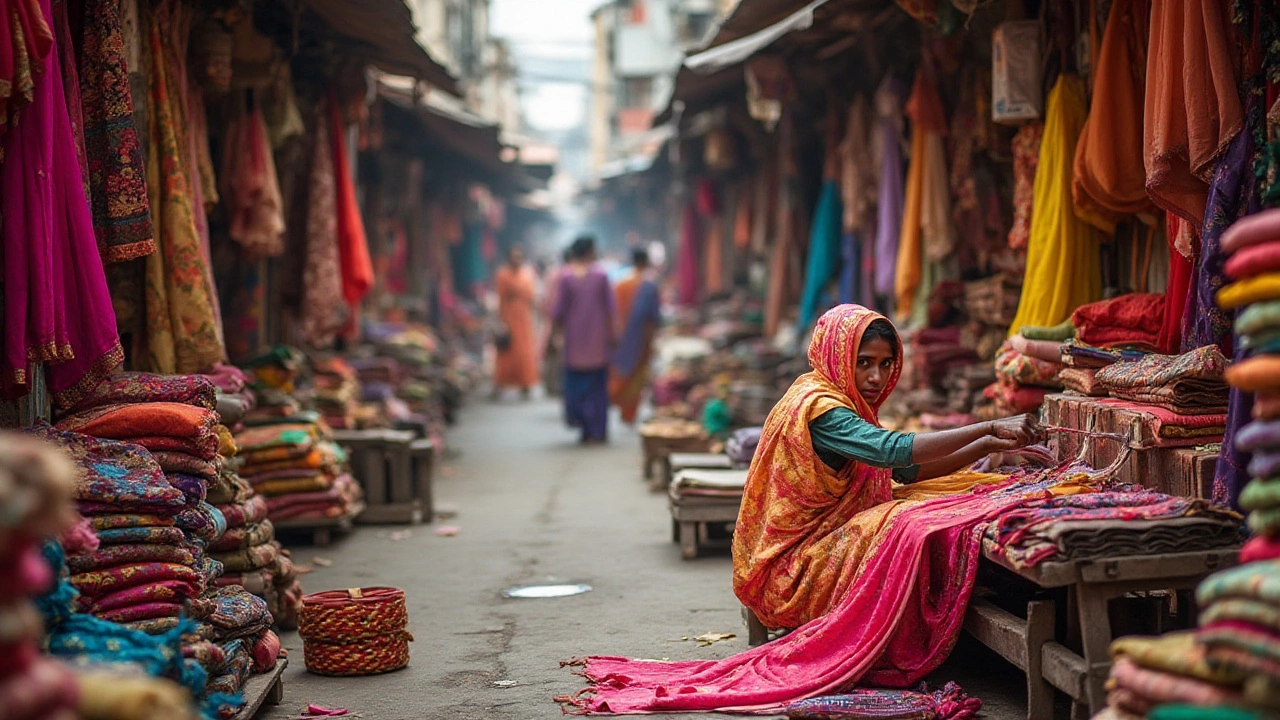Indian Clothing: What’s Hot, Where It’s Made, and How You Can Get Involved
India’s clothing scene is buzzing with color, tech, and old‑school craftsmanship. Whether you’re a designer, a buyer, or just curious, knowing the basics can save you time and money.
Where Indian Clothing Is Made
First up, the factories. Surat dominates in synthetic fabrics and fast fashion – think polyester shirts and quick‑turn dresses. If you need pure cotton, look to the states of Gujarat and Maharashtra; they have the best cotton farms and a long history of weaving. Silk lovers head to Varanasi and Mysore, where hand‑loom silk still rolls out on looms that have been around for generations.
Small‑batch producers are sprouting in Delhi’s NCR and Bangalore’s tech corridor. These hubs blend digital design tools with traditional stitching, giving you a mix of speed and style. Most of these places offer online catalogs, so you can browse samples without leaving your desk.
Government schemes like the “Production Linked Incentive” (PLI) are pumping cash into these regions, which means newer machines and better quality control. In plain terms, that translates to fewer defects and more reliable delivery times.
How to Tap Into the Indian Apparel Market
Got a product idea? Start by checking the market size. India’s apparel market is projected to cross $120 billion by 2026, with a big slice coming from online sales. That tells you there’s room for niche items – sustainable fabrics, ethnic wear for the diaspora, or tech‑enabled garments.
Next, source smart. Factory audits are a must, but you don’t have to fly there. Platforms like IndiaMART and TradeIndia let you verify certifications, read reviews, and request sample kits. Ask for ISO 9001 or SA 8000 certificates if you care about quality and worker safety.
Design values matter. Indian buyers love a blend of tradition and trend. Adding a small embroidery detail or a heritage print can boost perceived value without blowing up costs. Keep color palettes vibrant but test them on local focus groups – what works in Europe may not click in Delhi.Pricing is another win‑win point. Labor costs in India average around $2‑$3 per hour, far lower than many Western nations. That gives you wiggle room to offer competitive wholesale rates while keeping margins healthy.
Finally, plan your logistics. Major ports like Mumbai and Chennai handle most apparel exports, and the inland rail network connects interior factories to these hubs efficiently. Work with a customs broker who knows the GST and import duty rules – a small mistake can add 10‑15% extra cost.
In a nutshell, Indian clothing offers a mix of scale, skill, and price advantage. By picking the right region, vetting factories online, and respecting local design cues, you can launch a successful apparel line without a massive upfront investment.
Ready to take the next step? Start by listing the top three fabric types you need, reach out to two manufacturers in Surat and Varanasi, and ask for a 5‑piece sample kit. You’ll see the quality, lead time, and communication style before signing any contract. That simple test can be the difference between a smooth launch and a costly delay.

Exploring Surat's Renowned Textile Industry: A Hub for Fashion
Surat, a bustling city in India, has gained international recognition for its thriving textile industry. Known as the 'Silk City' of India, it stands out as a significant player in the global fashion market. Explore how this vibrant city has become a powerhouse for clothing production, weaving traditions with modern techniques to cater to diverse fashion needs. Discover the key factors behind Surat's reputation in the textile world and its role in shaping fashion trends.
Read More